Double-Crust Apple Slab Pie
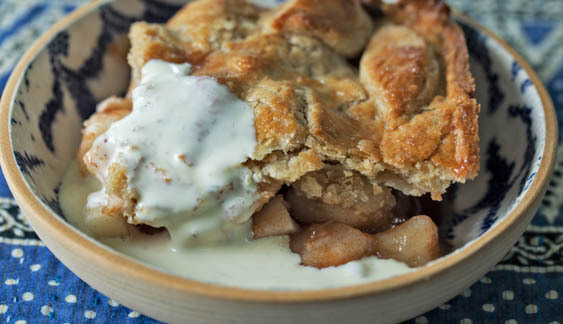
introduction
This double-crust apple slab is a round pie in a square pan. And a square pan has real advantages, it turns out. Top and bottom crusts? A couple of quadrilaterals traced on dough and cut out—no fussy fittings or crimping required. And, because the top and bottom crusts operate independently of each other, the bottom crust can be completely prebaked before filling so it will remain pleasantly thick and satisfying, flaky and tender even after the onslaught of apples. The apples themselves require substantially less time in the oven, baking cozily under a top crust laid over them like heavy quilt. This slab hits all the notes of the best apple pie—and it looks pretty and serves beautifully, too.
Baking Notes
If you cannot find Macs, go with Braeburn or Liberty apples instead.
equipment mise en place
To make this recipe, you will need a digital kitchen scale, two small bowls, two liquid measuring cups, a food processor, a large bowl, a ruler, a pizza stone or baking steel, an 8-inch square glass baking dish, parchment paper, a rolling pin, a paring knife, a pizza cutter, 2 to 3 cups of pie weights, a wire rack, a rimless baking sheet, and a pastry brush.
-
for the pastry:
-
6.75ounces cold unsalted European-style butter, cut into ½-inch cubes, plus 0.5 ounce unsalted European-style butter, room temperature, for the baking dish
-
A handful of ice cubes
-
Spring or filtered water
-
8.25ounces Anson Mills Colonial Style Fine Cloth-Bolted Pastry Flour, frozen, plus additional for rolling out the dough
-
1.5ounces Anson Mills French Mediterranean White Bread Flour, frozen
-
⅝teaspoon fine sea salt
-
-
for the filling:
-
2juicy lemons
-
2¼pounds McIntosh apples
-
3.5ounces sugar
-
0.75ounce (3 tablespoons) cornstarch
-
2teaspoons ground cinnamon
-
Pinch of fine sea salt
-
-
for finishing and serving:
-
1large egg
-
1teaspoon spring or filtered water
-
Custard Sauce (Crème Anglaise) or vanilla ice cream
-
-
Divide the cold butter cubes among two small bowls, one with 3.75 ounces of butter, the other with 3 ounces. Cover each bowl with plastic wrap and place them in the freezer for 30 minutes.
-
When the butter is frozen, drop the ice cubes into a small liquid measuring cup, fill the cup with water, and set it aside. In a food processor, pulse the flours and salt a couple of times to combine. Scatter the larger amount of chilled butter over the flour mixture and pulse until the butter pieces are fine-ish and the mixture looks pebbly, about ten 1-second pulses. Scatter the remaining butter over the flour-butter mixture and pulse until the butter is combined but still bears visible ¼-inch chunks (fig. 2.1), about five 5-second pulses. Set a second liquid measuring cup on a digital kitchen scale, tare the scale, and weigh out 2.2 ounces of ice water, taking only the water and none of the ice; reserve the remaining ice water. With the machine running, pour the ice water through the feed tube and process for just 2 to 3 seconds more. The crumbs will look fine and granular and the butter will be in fine bits but the mixture will not have come together into a cohesive dough.
-
Turn the contents of the processor into a large bowl (fig. 3.1) and squeeze some of the crumbs in your palm—they should hold together but not feel damp (fig. 3.2). If they do not hold together, sprinkle a drop or two more ice water over them and fluff with your fingers to incorporate. Test the mixture once again and fluff in additional water, if needed—but no more than 3 teaspoons additional water should be required.
-
Lay two large sheets of plastic wrap side by side on the counter. With the dough is still in the bowl, use your hands to squeeze and “mold” two similarly sized mounds, leaving the crumbs and bits in the bowl; set each portion on a plastic sheet. Press and squeeze each pile into a compact square, adding the crumbs and pressing them into the mass. Each square of dough should weigh just a little more than 9 ounces. Wrap each square tightly in the plastic wrap, blocking and squaring the sides to form two 4-inch-square dough blocks (fig. 4.1). Refrigerate for at least 2 hours or up to overnight.
-
At least 1 hour before you plan to bake the pie, adjust the oven racks to the lowest and upper-middle positions. Place a pizza stone or baking steel on the lower rack and heat the oven to 425 degrees; allow the stone or steel to heat for at least 1 hour. Grease an 8-inch square glass baking dish with the softened butter and set it aside.
-
Remove one portion of dough from the refrigerator and give it a 5-minute rest on the counter. Unwrap it, then set it on a lightly floured sheet of parchment paper. Using a rolling pin, pound the dough into a slightly flatter square. Lightly flour the top of the dough and roll it into an evenly thick 9½-inch square. The dough does not need to be—and indeed should not be—super-thin. It should, however, be of even thickness. Set the baking dish on top of the dough square (fig. 6.1) and quickly score its outline with a paring knife. Lift the dish off the dough and, using a pizza cutter (or the paring knife), cut along the outside of the scored outline. Lift off the scraps, wrap them loosely in plastic wrap, and refrigerate to use for decorative leaves. Fit the dough square into the bottom of the prepared dish. Line the dish with parchment paper, leaving ample overhang on all sides, then fill with 2 to 3 cups of pie weights. Bake on the pizza stone or baking steel for 20 minutes. Through the dish, you’ll be able to see that the pastry has browned and little butter bubbles dancing around the corners. Remove the dish from the oven and lift out the paper and weights. Return the dish to the pizza stone and continue to bake until golden brown and fully set, about 10 minutes longer. Transfer to a wire rack (fig. 6.2) and let cool; leave the oven on.
-
Remove the second portion of dough from the refrigerator and give it a 5-minute rest on the counter. Roll it out on lightly floured parchment just as you did the bottom crust. With a ruler and pizza cutter (or paring knife), cut the rolled-out dough into an 8½-inch square (a slightly larger square creates an effortless ruffle along the top crust as the apple slab bakes (fig. 7.1). Drape plastic wrap over the top of the dough, slide the entire rig onto a rimless baking sheet, and refrigerate. Remove the scraps reserved for decoration from the refrigerator. Roll them slightly thinner, then cut freeform leaves with the paring knife (fig. 7.2). Place the leaf decorations on a plate and refrigerate.
-
Prepare the filling: Halve the lemons and squeeze their juice into a large bowl. Peel, core, and halve the apples. Cut each half into 4 wedges if the apples are small to medium or 6 wedges if they are large. Cut the wedges into 2 or 3 stout chunks; as they are cut, turn the chunks into the lemon juice and toss to coat. After all the apples are cut, add the sugar, cornstarch, cinnamon, and salt, then toss well. Without delay, turn the filling into the cooled bottom crust (fig. 8.1). Lay the top crust over the filling, allowing the edges to nod over and cut a few vents with a paring knife (fig. 8.2).
-
Glaze and bake: In a small bowl, whisk together the egg and water. Brush the top crust with egg wash, then attach the leaf decorations. Brush the leaves with egg. Bake on the upper oven rack until the crust is deep golden brown and the filling is bubbling, about 30 minutes (fig. 9.1). Transfer to the wire rack and let cool for about 15 minutes. Serve warm with custard sauce or ice cream.
-
-
2.1

-
-
-
3.1

-
3.2

-
-
-
4.1

-
-
-
6.1

-
6.2
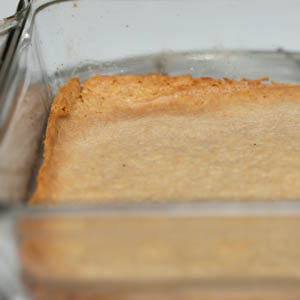
-
-
-
7.1
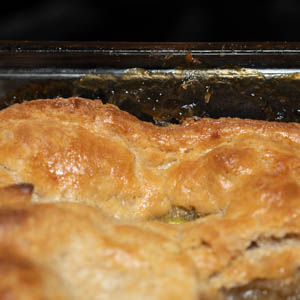
-
7.2
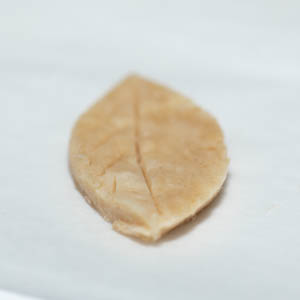
-
-
-
8.1
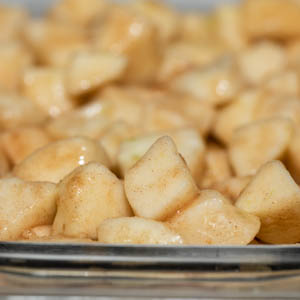
-
8.2
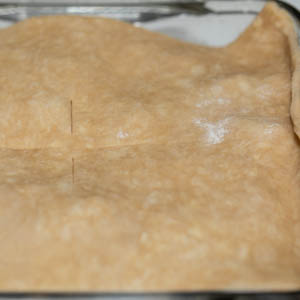
-
-
-
9.1
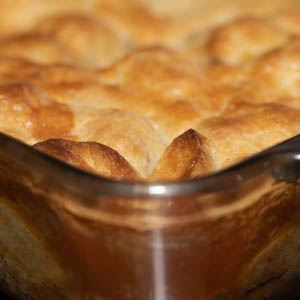
-